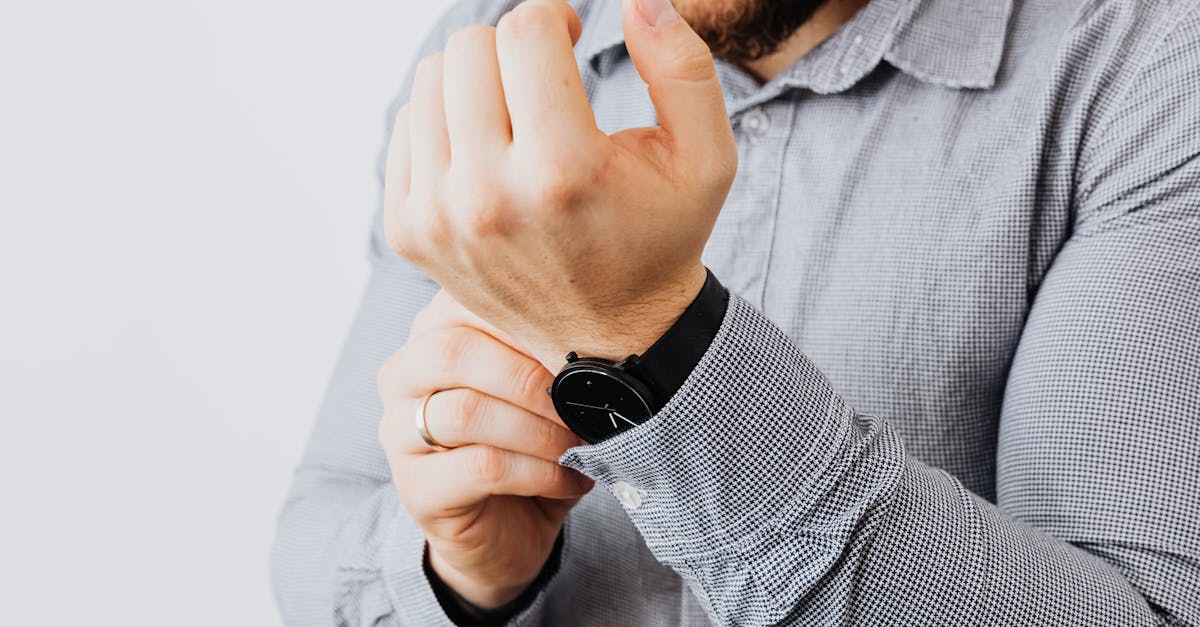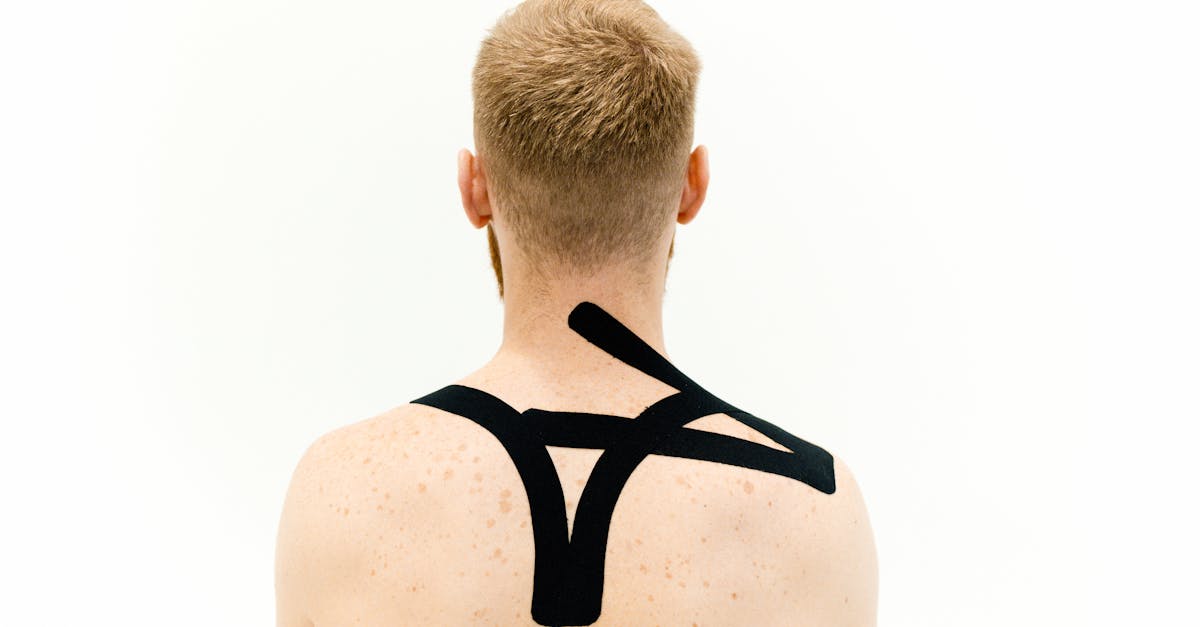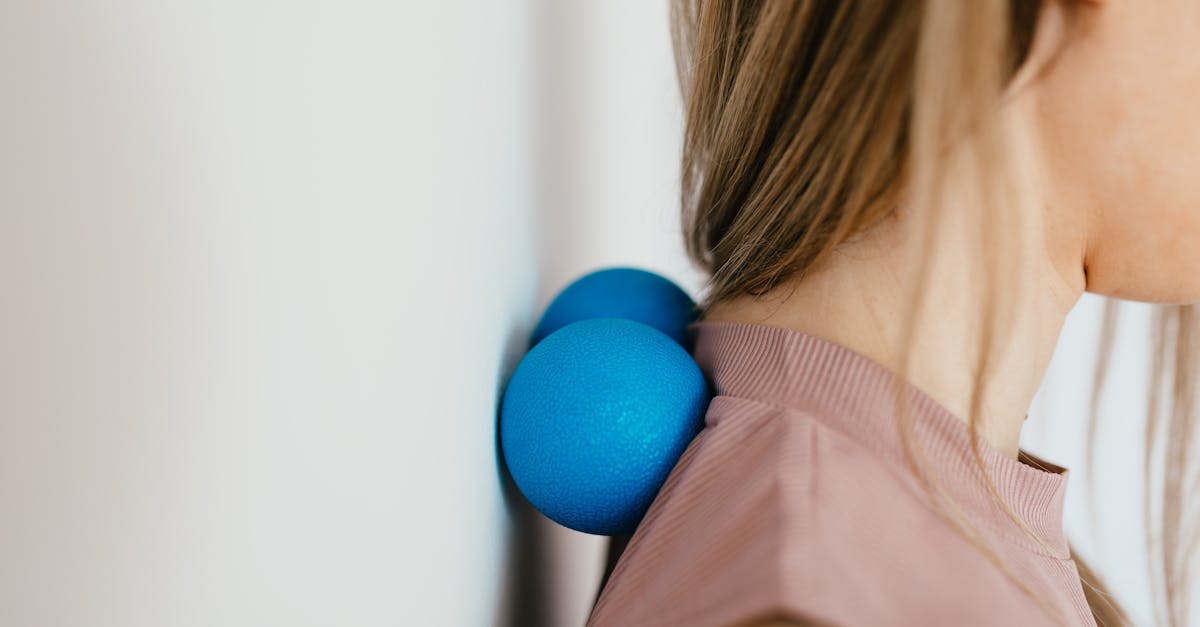Suffering from shoulder pain due to a rotator cuff injury? You’re not alone.
In Short: Are you searching for effective solutions to shoulder pain relief stemming from a rotator cuff injury? Discover the best exercises for rotator cuff injury designed to strengthen your shoulders and enhance mobility. These targeted shoulder pain exercises address common issues such as frozen shoulder and shoulder impingement, promoting recovery through an innovative, integrative approach. Pulse Align Clinics offer a unique method of postural recalibration that can assist you in reclaiming your health and improving your overall strength. Ready to experience the benefits? Book your appointment today!
Are you struggling with shoulder pain and a rotator cuff injury?
Discover gentle exercises for healing rotator cuff injuries through Pulse Align’s integrative approach. This innovative method emphasizes shoulder pain relief by addressing common issues such as bursitis, tendinitis, and shoulder impingement. By focusing on targeted shoulder pain exercises, Pulse Align aids in restoring mobility and strength, allowing you to regain comfort and minimize symptoms associated with shoulder pain when lifting the arm.
At Pulse Align, the commitment to holistic well-being ensures that clients experience not only natural remedies for shoulder bursitis but also improved posture and muscle function, ultimately fostering a journey towards optimal shoulder health.

Enhancing Your Well-Being Through Gentle Stimulation
When it comes to nurturing our optimal health, posture improvement and the practice of neuromuscular recalibration play vital roles. At Pulse Align, we understand that supporting your body’s natural processes can lead to enhanced comfort and improved functionality. By integrating gentle stimulation techniques, we guide clients toward rediscovering balance in their lives without directly addressing symptoms.
A Gentle Approach to Restoring Balance
Pulse Align specializes in using gentle stimulation methods to recalibrate muscle tone, promoting natural balance and overall wellness. By focusing on muscle tone symmetry and posture correction, we empower individuals to align their bodies harmoniously. This holistic approach engages your body’s innate abilities, allowing for a return to optimal function and the reduction of tension and discomfort linked with daily activities.
Holistic Benefits of Our Services
Embracing a holistic approach can yield remarkable results, and many of our clients have expressed their satisfaction with the benefits of Pulse Align services. Through our focus on the body’s natural healing capabilities, many individuals report improvements in balance and overall functionality. For example, one client noted, “Since starting at Pulse Align, I feel more agile and stronger in my everyday motions.” Such feedback highlights how reinforcing muscle tone and encouraging overall balance creates a positive shift in daily well-being.
Start Your Wellness Journey Today
If you’re ready to explore how Pulse Align can enhance your overall well-being and restore balance, we invite you to find a clinic near you. We have locations in vibrant cities such as Montreal, La Prairie, Terrebonne, Chicoutimi, Charlesbourg, Saint-Jérôme, Châteauguay, Sainte-Marie, Les Escoumins, Granby, and Panama City. Remember, our services are designed to complement healthcare routines, ensuring that clients remain engaged with their healthcare team. Visit us today to book your consultation and take the first step toward a healthier, more balanced life for the entire family!
Medical Disclaimer
Pulse Align complements but does not replace medical care. Clients are encouraged to stay under the supervision of their healthcare team for any medical conditions. Any benefits reported by clients are credited to the body’s natural ability to restore balance, not to Pulse Align’s direct intervention.
Gentle Exercises for Healing Rotator Cuff Injuries
- External Rotation: Strengthens the rotator cuff and supports shoulder stability.
- Internal Rotation: Enhances internal shoulder muscles for improved functionality.
- Scapular Retraction: Encourages proper shoulder mechanics and stability.
- Wall Angels: Promotes flexibility and aligns shoulder posture.
- Pendulum Exercise: Facilitates gentle movement to reduce stiffness.
- Theraband Resistance Exercises: Builds strength gradually through controlled resistance.
- Shoulder Flexion: Increases range of motion for daily activities.
- Shoulder Abduction: Strengthens deltoids and enhances overall shoulder resilience.

Rotator cuff injuries can lead to significant shoulder pain and discomfort, affecting daily activities and overall quality of life. Fortunately, gentle exercises offer a pathway to natural healing and recovery. In this article, we’ll explore the best exercises for rotator cuff injury recovery through Pulse Align’s unique integrative approach, emphasizing neuromuscular health, posture improvement, and holistic recalibration.
Understanding Rotator Cuff Injuries
The rotator cuff comprises several muscles and tendons that stabilize the shoulder joint. Common issues include bursitis, tendinitis, and conditions like frozen shoulder. These injuries can cause shoulder pain when lifting the arm or during activities related to everyday tasks. Understanding these shoulder pain causes is crucial in initiating the right treatment and recovery process.
Effective Shoulder Pain Exercises
At Pulse Align, we focus on gentle yet effective shoulder pain exercises that promote healing and restore balance. Here are some recommended exercises that can be integrated into your daily routine:
1. External Rotation
This exercise strengthens the rotator cuff by isolating the external rotators. Use a resistance band secured at waist height. Keep your elbow at a 90-degree angle and rotate your forearm outward. This motion effectively targets the underlying shoulder pain causes.
2. Scapular Retraction
Pulling the shoulder blades together can combat poor posture and alleviate discomfort. This small movement encourages posture correction and supports core strengthening. Hold this position for several seconds to gain maximum benefit.
3. Wall Angels
Stand against a wall with your arms in a “W” position, then slowly lift them to form a “Y.” This dynamic exercise promotes flexibility while addressing issues related to shoulder impingement, improving alignment, and reducing pain.
4. Pendulum Swings
Allow your affected arm to hang and gently swing it in small circles. This movement facilitates gentle mobilization, especially for those experiencing frozen shoulder. It promotes circulation, easing tension and stiffness.
5. Doorway Stretch
Stand in a doorway, placing your forearms against the frame. Lean forward gently. This stretch alleviates tension and helps in maintaining shoulder flexibility, which is essential in preventing shoulder pain at night.
Integrating Exercises into Daily Activities
Incorporate these exercises into your daily routine. For example, set specific times for stretches during work breaks or integrate them into your morning routine. Consistency is key for achieving optimal results, especially with core strengthening and trunk exercises that support overall wellness.
Book Your Consultation with Pulse Align
Do you want to explore how Pulse Align can support your recovery from rotator cuff injuries? Our clinics in locations such as Montreal, La Prairie, and Panama City offer a personalized approach to healing. We specialize in techniques that foster natural remedies for shoulder bursitis and holistic well-being.
By booking a consultation, you can discover tailored exercise plans designed to enhance your journey toward pain-free living. Embrace the opportunity to reclaim your strength and comfort, and take your first step toward improved health with Pulse Align today!
| Exercise Type | Benefits |
|---|---|
| External Rotation | Enhances shoulder stability while promoting natural balance. |
| Scapular Retraction | Supports posture correction and encourages overall muscle symmetry. |
| Wall Angels | Promotes flexibility and aids in natural shoulder alignment. |
| Pendulum Exercise | Facilitates gentle movement, reducing stiffness and enhancing mobility. |
| Doorway Stretch | Alleviates tension in shoulder muscles, fostering comfort during activity. |
| Theraband Resistance Exercises | Encourages gradual strength building through controlled techniques. |
| Shoulder Flexion | Improves range of motion for daily tasks while supporting functionality. |
| Shoulder Abduction | Strengthens deltoids, enhancing overall shoulder resilience. |
| Rotator Cuff Stretch | Maintains flexibility, promoting ease of movement and harmony. |
| Core Strengthening | Supports posture and stability, fostering well-being through balance. |

Client Testimonials: Embracing Wellness Through Gentle Exercises
In La Prairie, I discovered the transformative impact of Pulse Align’s gentle exercises for my rotator cuff injury. After just a few sessions, I began to experience noticeable improvements in my mobility and comfort. The approach emphasized my body’s natural ability to recalibrate, allowing me to regain balance effortlessly. It was truly amazing to feel such progress in a supportive environment that genuinely cares for my wellness.
As a resident of Mont-Royal, I often sought holistic methods to support my healing journey. Pulse Align has proven to be an invaluable resource. The integrative techniques they employ not only eased my shoulder pain but also fostered a sense of overall well-being. Each session left me feeling rejuvenated, as though my body had rediscovered its innate rhythm. Clients in the area can truly benefit from this unique approach to recovery.
I live in Terrebonne, and my experience with Pulse Align has been nothing short of remarkable. The gentle exercises they provided helped me to strengthen my shoulder while prioritizing my overall wellness. The staff’s dedication to supporting the body’s natural processes created a nurturing environment for my recovery journey. I highly recommend this service to anyone seeking an effective path to healing.
In Chicoutimi, I referred my family to Pulse Align after my own positive experience. The holistic recovery methods they offer have made a significant difference in our lives. The gentle integration techniques supported not only my shoulder recovery but also enhanced our shared commitment to overall wellness. It’s comforting to know that Pulse Align collaborates with healthcare professionals, ensuring a comprehensive approach to our health needs.
Residents of Sainte-Marie have also expressed their satisfaction with Pulse Align’s services. The dedicated team tailors each program to the individual, promoting healing through innovative exercises that honor the body’s natural abilities. The improvements experienced were evident and empowering—clients felt more balanced and capable of engaging in their daily activities without discomfort.
For those in nearby areas like Châteauguay and Saint-Jérôme, Pulse Align’s integrative approach offers a refreshing perspective on shoulder health. Clients have shared testimonials highlighting how the gentleness of the exercises led to significant progress in their recovery, allowing them to embrace a lifestyle unburdened by pain. I encourage anyone in these regions to explore what Pulse Align can offer for their wellness journey.
For more information about the transformative services available at Pulse Align, visit Our Clinics. Together, we can embark on an empowering journey towards improved health, supported by a team that understands the importance of holistic recovery and addresses the needs of clients and their families throughout the process.
Experiencing shoulder pain due to a rotator cuff injury can disrupt everyday routines. Integrating effective shoulder pain exercises not only aids recovery but also enhances neuromuscular health and promotes posture improvement. This article outlines the best exercises tailored for rotator cuff recovery, focusing on holistic recalibration techniques offered by Pulse Align.
Understanding rotator cuff injuries is essential. The rotator cuff is comprised of muscles and tendons that stabilize the shoulder joint. Common issues arise from repetitive overhead motions, resulting in conditions like bursitis, tendinitis, and even frozen shoulder. Moreover, these conditions can lead to debilitating shoulder pain when lifting the arm, interfering with daily activities. Understanding the best exercises for rotator cuff injury recovery is vital for alleviating discomfort and restoring natural movement.
To effectively manage pain and regain mobility, engage in the following exercises:
1. External Rotation – This exercise strengthens the rotator cuff by isolating the external rotators. Secure a resistance band at waist height, keeping your elbow at a 90-degree angle. Rotate your forearm outward, maintaining close contact with the body. This motion targets shoulder pain causes and aids in shoulder pain relief.
2. Scapular Retraction – Improve posture correction and shoulder mechanics by pulling the shoulder blades together as if holding a pencil. This small movement effectively combats the shoulder pain that arises from poor posture. Focus on maintaining this position for several seconds to enhance core strengthening.
3. Wall Angels – This dynamic exercise helps promote shoulder mobility while addressing trunk exercises. Stand against a wall with your arms in a “W” position, then slowly raise them to form a “Y.” This movement aligns the shoulder structures and encourages proper muscle function, reducing the risk of injury.
4. Pendulum Swings – For gentle mobility, lean forward and let the affected arm hang, swinging it in small circles. This exercise is especially beneficial for those dealing with a frozen shoulder, as it promotes circulation and eases stiffness.
5. Doorway Stretch – Stand in a doorway, placing your forearms against the frame, and gently lean forward. This stretch alleviates tension in the front shoulder region while enhancing posture, ultimately aiding in the prevention of shoulder pain at night.
Incorporate these exercises into your daily activities by setting designated times for stretching and strengthening. Whether during breaks at work or at home after daily tasks, consistent practice will lead to optimal results. Beginners should focus on form and control before progressing to more challenging variations.
At Pulse Align, clients can access personalized exercise plans and guidance specific to their needs. With a focus on symmetry and nervous system recalibration, the clinic supports individuals in achieving better shoulder function and overall well-being. Techniques such as shockwave therapy may also be explored to enhance recovery.
Our Mission
At Pulse Align, our mission is to deliver evidence-based, client-centered treatments that address the underlying causes of pain and dysfunction. By integrating advanced techniques and technologies, we strive to empower each person to take control of their health, ensuring a high standard of care, lasting relief, and an improved quality of life.
Learn more about this approach and available services at www.pulsealign.com and find a location near you here: https://pulsealign.com/our-locations/.
Enhancing Pain Relief with TAGMED’s Spinal Decompression Therapy
TAGMED offers advanced Spinal Decompression Therapy, a non-surgical solution designed specifically to address moderate-to-severe disc issues such as herniated discs, bulging discs, and conditions like spinal stenosis. By gently reducing pressure on the affected discs and nerves, this specialized technique helps enhance mobility, alleviate pain, and support your body’s natural healing process. If you’ve reached a plateau with other therapies, discover how TAGMED’s evidence-based decompression approach can help you resume an active, comfortable life.
Have you tried conventional treatments and still struggle with persistent back pain due to a severe disc condition?
The mechanism behind TAGMED’s neurovertebral decompression applies a controlled, progressive traction force to the spine. This method increases the space between vertebrae, reduces pressure on intervertebral discs and nerve roots, and promotes better fluid circulation in the targeted area. The result is a significant lowering of inflammation and relief from pain, providing a reliable, non-invasive solution for individuals facing chronic back issues like disc pinch and disc protrusion.
One of the specific benefits of this non-invasive approach is its effectiveness in alleviating chronic pain and symptoms linked to conditions such as herniated discs or foraminal stenosis. By reducing pressure on nerve structures and optimizing fluid circulation around the discs, TAGMED’s therapy can speed up recovery and enhance the quality of life for a wide variety of patients seeking relief from persistent discomfort.
When comparing TAGMED’s neurovertebral decompression technology with other commonly used treatments, such as pain medications, corticosteroid injections, surgery, or traditional physiotherapy, distinct advantages emerge. Neurovertebral decompression does not involve invasive interventions and minimizes medication-related risks, leading to a potentially quicker recovery path. For those seeking safer, evidence-based alternatives, this technique stands out as a compelling choice.
Real-world examples highlight the efficacy of TAGMED’s approach. Patients often report lasting pain relief, quicker resumption of daily activities, and a reduced dependence on pharmaceuticals. Testimonials reveal remarkable improvements in overall well-being. One patient noted, “After starting TAGMED’s therapy, I experienced significant relief from my sciatica. I can now engage in activities I thought I had lost forever!” Such firsthand accounts illustrate the tangible results and practical advantages of this therapeutic approach for conditions like facet syndrome and brachialgia.
In summary, TAGMED’s Spinal Decompression Therapy offers a promising, holistic solution for individuals suffering from chronic pain and related symptoms. With its non-invasive nature and focus on enhancing the body’s natural healing processes, it represents a viable alternative to traditional treatment methods, empowering patients to reclaim their quality of life.
Embrace a Holistic Journey to Strength and Balance
If you’re seeking a natural and holistic approach to enhance your well-being, Pulse Align offers an integrative method that promotes healing through gentle techniques. Experience improved posture correction, reduced discomfort, increased mobility, and a boost in overall wellness.
At Pulse Align, we prioritize our clients’ experiences, fostering a supportive environment that encourages personal growth. Many clients have shared their success stories, highlighting the positive transformations they’ve experienced, thanks to our neuromuscular recalibration methods. By connecting with your body’s innate healing abilities, you can rediscover comfort and reclaim your vitality.
Ready to take the next step in your wellness journey? Discover the Pulse Align difference today. Visit our website to learn more about our holistic health services and schedule your consultation now at a location near you. Your path to improved health and a balanced life awaits!

Do you suffer from a chronic condition that responds little or not at all to conservative treatments?
Discover a new approach to improving your overall wellness with Pulse Align, a non-invasive, innovative method designed to help restore the body’s natural balance and posture through gentle, imperceptible pulses. This holistic approach focuses on enhancing muscle tone and improving structural alignment, which can lead to reduced tension in the muscles and joints, addressing common discomforts from a natural perspective.
At Pulse Align, we prioritize the body’s inherent ability to recalibrate itself, which often results in exceptional improvements in comfort and posture. Instead of directly targeting discomfort or conditions, our techniques foster an environment where the body can thrive naturally, leading to a sense of well-being that resonates through daily activities. Clients find that their alignment improves, allowing them to embrace their lives with newfound vitality.
Our dedicated team takes a personalized approach, crafting individualized experiences designed to meet each client’s unique needs. Many clients have shared their transformative experiences, highlighting significant improvements in overall balance and comfort. For example, individuals have reported feeling lighter, more agile, and capable of enjoying their favorite activities again, thanks to the supportive environment provided by our trained professionals.
To learn more about how Pulse Align can support your wellness journey, visit our website and explore the variety of services we offer. With locations in cities such as La Prairie, Mont-Royal, Terrebonne, and many others, you’ll be able to find a clinic nearby. We invite you to book a consultation for yourself or your family, knowing that our services complement existing healthcare routines without replacing them. Pulse Align is committed to providing a safe, family-friendly environment, ensuring that your wellness journey is tailored to your specific needs.
Experience the benefits of our gentle, non-invasive approach at Pulse Align. To learn more about our services and book an appointment, visit our website: Pulse Align. Together, let’s embrace a holistic pathway to enhanced well-being and functional balance!
Frequently Asked Questions
Shoulder Pain
- What are common causes of shoulder pain?Causes include rotator cuff tendinitis, bursitis, ligament injuries, osteoarthritis, dislocations, and repetitive motions.
- Is physical therapy effective for shoulder pain?Yes, physical therapy includes exercises, stretches, manual therapy, and postural advice to restore shoulder function.
- Are women more sensitive to shoulder pain?Studies don’t show significant differences by sex, but activities, professions, and sports can influence risk.
- Is post-surgery physiotherapy necessary?Yes, tailored rehabilitation is essential to regain strength, mobility, and prevent post-operative stiffness.
- Do relaxation techniques help reduce shoulder pain?Yes, they reduce stress, muscle tension, and can aid recovery.
- Can I play sports with shoulder pain?It’s best to consult a professional before continuing sports, to avoid aggravating the injury.
- Are cortisone injections effective?They can temporarily relieve pain and inflammation, but are not a permanent solution.
- Is mild morning shoulder stiffness normal?A slight stiffness can be normal, but if it lasts long or is painful, seek medical advice.
- Can manual therapy by a therapist help?Yes, it can improve mobility, reduce muscle tension, and restore better shoulder function.
- Can I use resistance bands to relieve shoulder pain?Yes, resistance bands allow progressive strengthening of shoulder muscles, but do it without pain.
Adam Blanc understands that shoulder pain can do more than slow you down—it can impact your entire quality of life. As a Shoulder Pain Awareness Advocate at Pulse Align, he’s dedicated to showing readers that genuine relief is not just possible, but within reach. Drawing on the latest research, Adam combines expert insights with compassionate guidance, inspiring people to move toward greater comfort and mobility. His approach is about more than just managing symptoms; it’s about empowering individuals to rediscover their strength and embrace every moment, free from the constraints of pain.
Medical Disclaimer
The information and advice provided on this site do not replace the advice, diagnosis, or treatment of a healthcare professional. Please note that the author of this article is neither a doctor nor a specialist in a medical specialty as defined by the Collège des médecins du Québec. Manual medicine, functional medicine, and sports medicine as described on this site exclude any medical treatment or diagnosis made by a doctor or medical specialist. Always consult your doctor for any medical questions. For more details, please read our complete Legal Notice.
References
- Lee, J.-H., Chun, Y.-M., Kim, D.-S., Lee, D.-H., & Shin, S.-J. (2022). Effects of neuromuscular electrical muscle stimulation on the deltoid for shoulder function restoration after reverse total shoulder arthroplasty in the early recovery period: a prospective randomized study. Archives of Orthopaedic and Trauma Surgery, 143(6), 3037–3046. https://doi.org/10.1007/s00402-022-04515-0
- Seitz, A. L., Podlecki, L. A., Melton, E. R., & Uhl, T. L. (2019). Neuromuscular adaptions following a daily strengthening exercise in individuals with rotator cuff related shoulder pain: a pilot case-control study. International Journal of Sports Physical Therapy, 14(1), 74. https://www.ncbi.nlm.nih.gov/pmc/articles/PMC6350670/
- Pillastrini, P., Rocchi, G., Deserri, D., Foschi, P., Mardegan, M., Naldi, M. T., Villafañe, J. H., & Bertozzi, L. (2016). Effectiveness of neuromuscular taping on painful hemiplegic shoulder: a randomised clinical trial. Disability and Rehabilitation, 38(16), 1603–1609. https://doi.org/10.3109/09638288.2015.1107631
- Moroder, P., Karpinski, K., Akgün, D., Danzinger, V., Gerhardt, C., Patzer, T., Tauber, M., Wellmann, M., Scheibel, M., & Boileau, P. (2024). Neuromuscular Electrical Stimulation–Enhanced Physical Therapist Intervention for Functional Posterior Shoulder Instability (Type B1): A Multicenter Randomized Controlled Trial. Physical Therapy, 104(1), pzad145. https://academic.oup.com/ptj/article-abstract/104/1/pzad145/7327094
- Kim, M.-S., Kim, S. H., Noh, S.-E., Bang, H. J., & Lee, K.-M. (2019). Robotic-assisted shoulder rehabilitation therapy effectively improved poststroke hemiplegic shoulder pain: a randomized controlled trial. Archives of Physical Medicine and Rehabilitation, 100(6), 1015–1022. https://www.sciencedirect.com/science/article/pii/S0003999319301601
- Lin, P., Yang, M., Huang, D., Lin, H., Wang, J., Zhong, C., & Guan, L. (2022). Effect of proprioceptive neuromuscular facilitation technique on the treatment of frozen shoulder: a pilot randomized controlled trial. BMC Musculoskeletal Disorders, 23(1), 367. https://doi.org/10.1186/s12891-022-05327-4
- Patsaki, I., Gerovasili, V., Sidiras, G., Karatzanos, E., Mitsiou, G., Papadopoulos, E., Christakou, A., Routsi, C., Kotanidou, A., & Nanas, S. (2017). Effect of neuromuscular stimulation and individualized rehabilitation on muscle strength in intensive care unit survivors: a randomized trial. Journal of Critical Care, 40, 76–82. https://www.sciencedirect.com/science/article/pii/S0883944116304002
- Hagberg, M., Harms-Ringdahl, K., Nisell, R., & Hjelm, E. W. (2000). Rehabilitation of neck-shoulder pain in women industrial workers: a randomized trial comparing isometric shoulder endurance training with isometric shoulder strength training. Archives of Physical Medicine and Rehabilitation, 81(8), 1051–1058. https://www.sciencedirect.com/science/article/pii/S000399930090409X
- İğrek, S., & Çolak, T. K. (2022). Comparison of the effectiveness of proprioceptive neuromuscular facilitation exercises and shoulder mobilization patients with Subacromial Impingement Syndrome: A randomized clinical trial. Journal of Bodywork and Movement Therapies, 30, 42–52. https://www.sciencedirect.com/science/article/pii/S1360859221002564
- Xu, Z.-H., An, N., & Wang, Z.-R. (2022). Exercise-induced hypoalgesia following proprioceptive neuromuscular facilitation and resistance training among individuals with shoulder myofascial pain: Randomized controlled trial. JMIRx Med, 3(4), e40747. https://xmed.jmir.org/2022/4/e40747/




